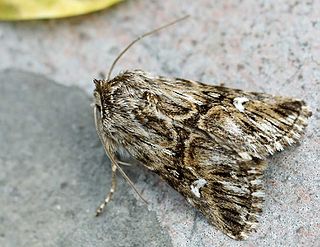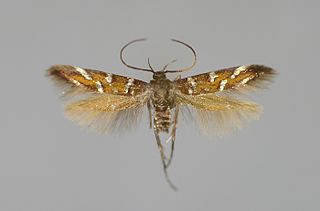
Asia is the largest continent in the world by both land area and population. It covers an area of more than 44 million square kilometers, about 30% of Earth's total land area and 8% of Earth's total surface area. The continent, which has long been home to the majority of the human population, was the site of many of the first civilizations. Its 4.7 billion people constitute roughly 60% of the world's population, having more people than all other continents combined.

The twite is a small brown passerine bird in the finch family Fringillidae.

The common linnet is a small passerine bird of the finch family, Fringillidae. It derives its common name and the scientific name, Linaria, from its fondness for hemp seeds and flax seeds—flax being the English name of the plant from which linen is made.

Linaria is a genus of almost 200 species of flowering plants, one of several related groups commonly called toadflax. They are annuals and herbaceous perennials, and the largest genus in the Antirrhineae tribe of the plantain family Plantaginaceae.

Linaria vulgaris, the common toadflax, yellow toadflax or butter-and-eggs, is a species of flowering plant in the family Plantaginaceae, native to Europe, Siberia and Central Asia. It has also been introduced and is now common in North America.

Linaria alpina, sometimes called alpine toadflax, is a purple-flowered plant native to mountainous areas of southern and central Europe. It belongs to the family Plantaginaceae.

Calophasia lunula is a Palearctic species of noctuid moth known by the common names toadflax moth and toadflax brocade moth.

Hyles livornica, the striped hawk-moth, is a moth of the family Sphingidae.

Melitaea didyma, the spotted fritillary or red-band fritillary, is a Palearctic butterfly of the family Nymphalidae.
HMS Linaria was a Flower-class corvette of the Royal Navy, which saw service during the Second World War. Originally built for the US Navy as Clash (PG-91), formerly CN-309, she was launched on 18 November 1942, by Midland Shipyards, Ltd., Midland, Ontario, Canada. Upon completion Clash was transferred to the Royal Navy on 19 June 1943, and commissioned as HMS Linaria. On 27 July 1946, she was returned to the US Navy. Never commissioned in the US Navy, Clash was sold on 15 January 1948 for commercial use and reportedly renamed Porto Offuro.

Linaria dalmatica is a herbaceous, short-lived perennial plant native to western Asia and southeastern Europe that has become a weed in other areas. The family this plant now belongs to is the Plantaginaceae Family. Previously, it belonged to the Scrophulariaceae (Figwort) family. Its common names include Balkan toadflax, broadleaf toadflax, and Dalmatian toadflax. Linaria dalmatica has unique yellow flowers with an orange center that draw individuals to purchase them to display in their gardens. The distribution of L. dalmatica to North America can be attributed to use as a fabric dye, folk remedies and as an ornamental plant. However, it is now classified as a weed in both Canada and the U.S.A.

Pyroderces argyrogrammos is a moth in the family Cosmopterigidae. It is found from central Europe south to the Mediterranean area, the Canary Islands, North Africa, the Middle East, Central Asia and China. It has recently also been recorded on the Channel Islands.
Eteobalea serratella is a moth in the family Cosmopterigidae. It is found in most of Europe, except the Benelux, Great Britain, Ireland, Iceland, Fennoscandia and the Baltic states. It was approved for release in the United States in 1995 for the biological control of toadflax. A few field releases have been made in western Canada and the western United States, but no established populations have been confirmed.

Pancalia leuwenhoekella is a moth in the family Cosmopterigidae.
Pancalia nodosella is a moth in the family Cosmopterigidae. It is found in Portugal, Spain, France, the Netherlands, Germany, Austria, Italy, Slovenia, Slovakia, most of the Balkan Peninsula, Ukraine, Latvia and Russia. In the east, the range extends through the Caucasus and Central Asia to Kyrgyzstan.

Pancalia schwarzella is a moth in the family Cosmopterigidae. It is found in almost all of Europe, except the south-east. In southern Europe, it is mainly found in mountainous areas up to altitudes of about 2,600 meters. In the east, the range extends to the mountains of Central Asia, Siberia and from Zabaykalsky Krai to the Kamchatka Peninsula.
xeno-canto is a citizen science project and repository in which volunteers record, upload and annotate recordings of bird calls and sounds of orthoptera and bats. Since it began in 2005, it has collected over 575,000 sound recordings from more than 10,000 species worldwide, and has become one of the biggest collections of bird sounds in the world. All the recordings are published under one of the Creative Commons licenses, including some with open licences. Each recording on the website is accompanied by a spectrogram and location data on a map displaying geographical variation.
The Chrysopeleiinae are a subfamily of the Cosmopterigidae, although some authors treat it as a full family, the Chrysopeleiidae.

Calophasia opalina is a moth of the family Noctuidae first described by Eugenius Johann Christoph Esper in 1793. It is found from Southern Europe to Central Asia.

Linaria repens, also known as pale toadflax or creeping toadflax in Europe and as striped toadflax in the US, is an herbaceous plant in the family Plantaginaceae, native to Europe.
















